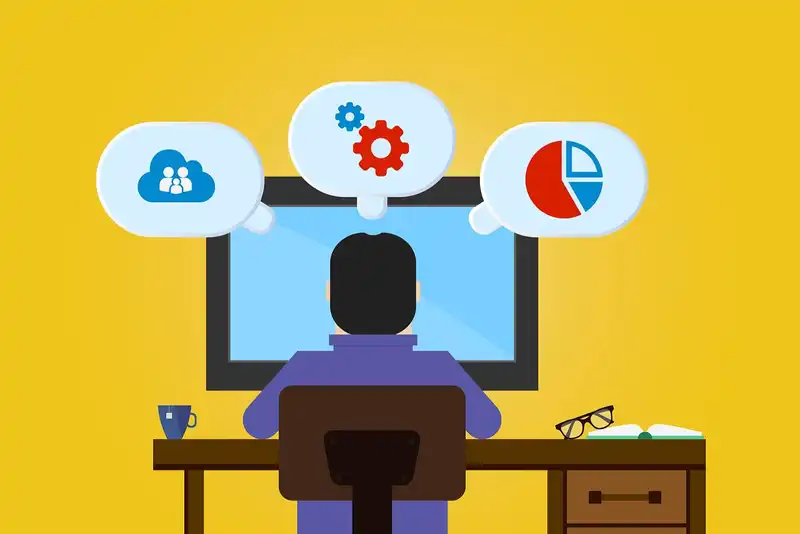Shaping a Culture of Continuous Employee Development
What Is Continuous Employment Development?
Continuous employee development is a theory that employee training and career development is not just a one time or even a series of continuous training opportunities presented to the employee. Employee development is planned and carried out daily while being evaluated on its effectiveness in the work environment.
This may or may not include a classroom setting. Examples may include training that is necessary for state-mandated licensing such as bar preparation courses for newly graduated law school students, continuing legal education (CLE) courses for attorneys, and insurance education courses required in each state for both insurance agents and brokers.
Some training is best outside of a classroom setting. This may be on-the-job training, a development program, coaching, and mentoring, group, or even team learning. Training and education play an important role in employee development and professional development within the workplace.
Daily sales meetings held in the morning or at the beginning of each shift, depending on the type of business, are another example of continuous employment development taking place outside of the classroom.
During these meetings, goals may be set, coaching methods may be used for individual or group performance, and a growth mindset is reinforced. It can also take place outside of the organization. Attending retreats as a group or even individually is a great way to encourage employees.
To grow and benefit from training, an organization must invest in their employees. Continuous employee development is a topic that benefits not just the employer. It also benefits the employees by offering opportunities for growth.
Get your employees involved by listening to them when they offer suggestions related to professional growth and continuous training. They are more likely to remain engaged and remain loyal to the company when they are excited to participate in the career development opportunities presented.
Suggestion boxes, open-door policies, and discussing continuous employee development on an individual level can provide your organization with a wealth of ideas for the group as well as for each individual.
How to Develop a Culture of Continuous Employee Development

A learning culture is an environment that supports an open mindset, an independent journey for more knowledge, and encourages shared learning directed toward the mission and goals of the company or organization.
It is just as much for the employee and their happiness within your organization as it is for your organization. However, happy employees are more likely to be productive as remain with you (which equates to you spending less for hiringunless it's simply time to grow!).
So, how can you create a culture that supports continuous employee development? Here are some tips to get you started-
- Create and nurture a growth culture- Continuous employee development only works when everyone understands that it is about growth development and overall improvement. This includes management being resistant to continuous leadership development and growth.
Employees must be open to growth. If people are stuck in a fixed mindset and think that they have no need or reason to change, they will struggle with continuous employee development.
- Know the difference (and teach the difference) between constructive criticism and being detrimental to others- Constructive criticism isn't about tearing people down. In fact, continuous employee development isn't always about giving criticism at all. This is a process of feedback- communication.
It's about helping others learn through talent management and consistent feedback. Just because someone doesn't do something your way, doesn't mean they aren't effective or can't get the job done.
Of course, that's not to say that policies and procedures shouldn't be followed, either. It is only to say that active listening and good communication are truly important. - Peer coaching can make all the difference- Continuous employee development doesn't have to just be in the shape of manager-employee. Peer coaching can make a big difference! This can be done in the form of volunteer presentations to teach new skills to an entire department or small group or it can even be one-on-one.
This isn't quite the same as on-the-job training. This should be done on a regular basis because it helps the teams get comfortable with each other and better understand what each team does for the organization.
- Set learning goals as a team- Team members should a few learning goals together. While each team member should have their individual learning goals, one person should be responsible for following up to see how everyone is doing on meeting their goal.
Goals should be set using the SMART method- Specific, Measurable, Assessable, Reachable, Timely. The other purpose of assigning one person to follow up is to help ensure that everyone has what they need to meet their learning goal.
Key Takeaways
- Continuous employee development isn't just about benefiting the company. It's beneficial for the employees as well by improving their performance management and training development
- Continuous development can help to inspire employee loyalty
- Continuous learning and development can take place in any format. Whether it's inside or outside of the classroom or an online training platform
- Employee training and continuous development can take place daily
- Companies should create and nurture a growth culture to help employee development
- Peer coaching can make a big difference in improving employee performance and employee engagement





